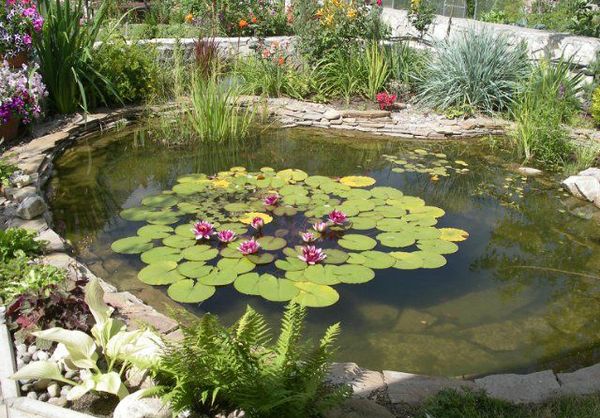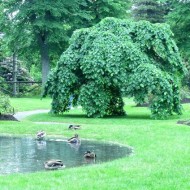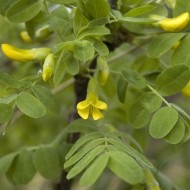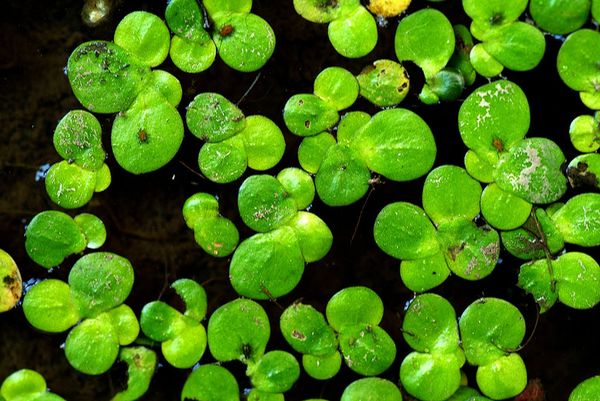Plants for a pond in the country: an overview of the most popular perennials
Content
Why do you need plants near the pond
Artificial reservoirs, decorated in any style, make the landscape design much brighter and richer. There is no need to talk about the possibilities of enjoying a quiet rest on the shore, but not everyone knows that reservoirs can perform not only a decorative, but also a practical function. The proximity of water helps to normalize the humidity of the air, and even on the hottest day, plants and flowers near it look fresh and attractive.
The most common design option for ponds is a natural zone as close as possible to the natural environment. To do this, they use not only various types of stone, sand, beautiful driftwood, but also plants. All kinds of flowers, shrubs and trees are planted in different zones of the reservoir, which will harmoniously combine with each other in one microsystem. They give the pond a complete look and maintain the shape of the coastal zone. This green space requires constant maintenance, and it may take several years for your dream oasis to look the way you previously envisioned.
Video "What to plant on the shore of the pond"
In this video, the expert will tell you what plants can be planted on the banks of a decorative pond.
Varieties
The size and position of the pond dictate their own conditions, so you need to correctly calculate which plants will look harmonious around the pond, and which ones directly in it. However, they should not run counter to each other in character.
Coastal
Large bodies of water provide much more opportunities for planting plants of various types and sizes. Ornamental trees, conifers and shrubs can be planted on wide banks. Dwarf trees in the Japanese style look great - the tree-like caragana and the shaggy Pendula plum, whose graceful branches hang down. Small willows - purple and goat - blend harmoniously into a minimalist design style. And the rough, handsome elm Camperdown will create the necessary shade and protect from the rain. These trees are quite frost-hardy and prune well.
From conifers near the pond, usually low varieties of larch (Kornik, Puli) with a spherical crown and shoots hanging down are grown. An ordinary weeping spruce will also look good if the place is sunny and open. You can also plant shrubs that have a high degree of moisture resistance: dwarf birch, elderberry, hydrangea.
Near small bodies of water, the best option would be a large-leaved hosta with various forms of leaves and colors, sedge and mothballs. If there is a decorative bridge on the pond, then at its base the willow loosestrife, male scabbard, and fern will look especially advantageous. Calamus, calla and irises can be planted right off the coast in shallow water.
Floating
The area near the pond should not be completely filled, otherwise a small number of floating and deep-sea plants will look superfluous, and the pond itself will be too cluttered. Flowers should not occupy the entire water space; individual islands will look much more profitable and attractive.Most of them have roots, but they do not take root in the soil. They not only decorate the pond, but also prevent the development of primitive green algae that pollute water bodies.
Floating plants vary in size from miniature duckweed to giant water hyacinth. You can decorate the body of water with water cabbage, villain, pemphigus, pinnate, pistia. The main thing is to take care of floating plants in a timely manner and clear the water surface.
Deep sea
Among the deep-sea plants, there are tenacious and capricious varieties. Most of them are recognizable and popular. Some bloom, others have unusually beautiful decorative leaves. They are planted to a depth of no more than 1.5 m, otherwise the plants may not have enough light and air. The condition of the deep-sea plants can be used to determine the quality of the water in the pond. If they are healthy and actively developing, then the water in the reservoir is clean, light and oxygen are supplied in the required volume. Most often, ponds are decorated with water lilies, nymphs, mulberry, water lily.
Planting and leaving
In order for the plants in the pond to take root and grow normally, they must be properly planted. The optimal time for planting is late spring - early summer. Plant aquatic cultures in containers or mesh baskets. The best soil option is clay and peat, in a 2: 1 ratio. The soil is poured to the bottom of the container, then the plant is carefully laid, straightening the roots. After laying, it is covered with soil to the root collar and tamped. From above, the soil is covered with pebbles. The container is lowered into water, supporting it with fishing line from several sides.
At first, it is not recommended to immerse the flower too deeply. The immersion takes place gradually. Caring for the plants in the pond consists of periodic cleaning and thinning. Small crops usually eat fish or frogs, but large ones need to be cleaned up on their own. You need to immediately get rid of damaged or yellowed parts of the greenery. They provoke the decay process and worsen the overall appearance.
Almost all floating plants must be taken from the reservoir for the winter.
Since garden ponds are usually shallow or built with containers dug into the ground, the water will freeze and the plants will die. Therefore, all plants placed in containers are transferred to a warm room and placed in a large container of water. Unrooted free-floating crops are recommended to be placed in aquariums or any other suitable container.
As it was rightly noted, beauty does not require sacrifice, but only care and investment. The green islets in the pond and ornamental crops in the coastal area will delight you for a long time if you provide them with proper care. The main thing in choosing plants is not to overdo it in your quest for perfection, and not try to plant everything at once.






